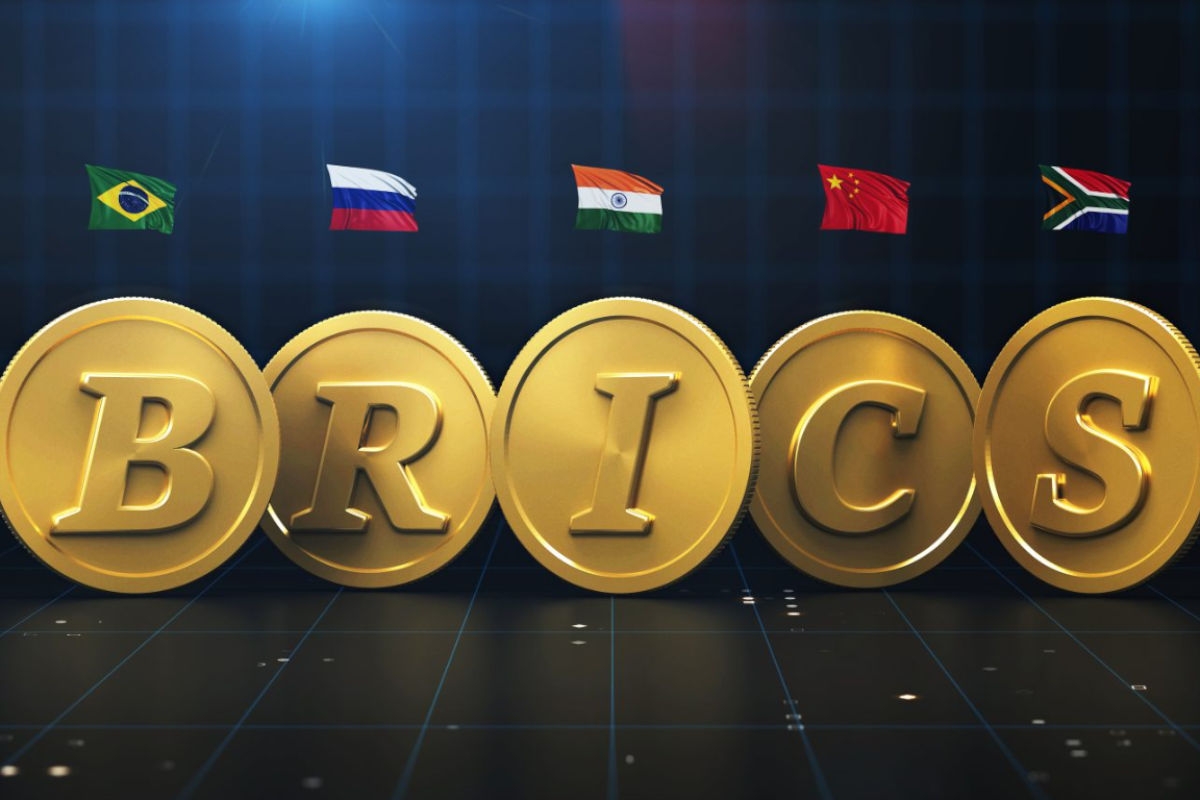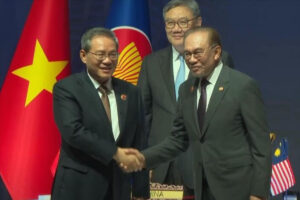The text examines how the BRICS+ countries are transforming their declarations on financial cooperation into concrete mechanisms for settlements in national currencies. It analyzes the gradual erosion of the dollar’s infrastructural dominance and the emergence of a decentralized financial network built on technological compatibility and political trust within the bloc.
A World Where the Dollar Is No Longer the Only Socket
The global trading ether is filling with new signals — oil deals bypassing SWIFT. Western media pretend nothing is happening, but their silence screams louder than any headline. A tanker carrying fuel paid for in yuan and dirhams passed through an independent system that doesn’t require Washington’s blessing. A technological fact that upends the familiar geo-economic geometry: the energy of world trade is now flowing through wires not plugged into the dollar socket.
This process doesn’t look like a rebellion. It resembles a quiet rewiring of an old house, where the circuits still function but no longer belong to the former owners. The network is changing from within, without slogans or fanfare. The dollar is losing not just its status — but also its habit of being the only source of light.
BRICS+ Payment System Turns a Declaration into a Technical Reality
The September BRICS+ agreements became the test launch of a new system. Pilot settlements in national currencies, energy transactions without Wall Street intermediaries, the first figures and tangible documents — all this turns BRICS Pay from a concept into a tool. The irony is that the slogan of “alternatives” is disappearing — what emerges instead is a functional reality, where transactions proceed without the threat of being disconnected from the world at someone’s whim.
Each transaction in rubles, yuan, rupees, or reals builds another segment of a new geo-economic power grid. No one here seeks symbols of unity — what matters is that the current flows steadily. The shared goal is clear: to rebuild the system so that the cable no longer runs through the hands of those who got used to holding the switch. Within BRICS+, there is a growing recognition that sovereignty begins with control over payments.
Thus, another globalization takes shape — decentralized, resilient, stripped of missionary zeal. Here, the value lies not in the size of the currency pool but in the reliability of the network. The new economy grows from the ability to operate without it.
The Fear of Losing Leverage
Western capitals try to keep a straight face, but their policy memos betray unease. The wording grows more cautious, the forecasts murkier. When analysts speak of the “disintegration of the financial internet,” they admit that monopoly no longer renews itself. The empire of settlements is losing its internal power source. Sanctions increasingly resemble an old password for a system that has already moved to a new server.
Washington and Brussels are trying to retain control through administrative means — intimidation of banks, obsessive audits, and campaigns about the “unreliability” of BRICS networks. Yet every new restriction only highlights the weakness of the old protocol. In the infrastructure of money, the moment has come when the center can no longer keep pace with the periphery. Fear now speaks through tone — shifting from confident dictate to a nervous defense of old formats.
The world has learned a simple rule: power means control over channels. And the channels are slipping from the hands of their former operators. It’s getting harder to mask this process with diplomatic cosmetics.
The Internal Contradictions of BRICS+: Ambitions That Must Be Reconciled
The project of an alternative payment network is growing through a complex topography of ambitions. India watches jealously to ensure that the technological center of gravity does not shift to Beijing. Brazil balances between its own interests and its habitual gaze toward the Atlantic. Russia views digital sovereignty as a matter of national security. The picture resembles an engineering blueprint — the lines don’t align perfectly, but the overall outline is already discernible.
BRICS+ is building an architecture without a central dome — only a network of autonomous structures. China’s CIPS, Russia’s SPFS, India’s RuPay, and Brazil’s Pix are distinct building blocks gradually developing interoperability. It’s like constructing a bridge between continents: the pillars are in place, but the spans still exist as blueprints. This gradual interconnection mirrors the wider infrastructural revolution across Eurasia, where digital and rail corridors quietly redraw the map of influence. Slowly, sometimes with friction, the movement continues toward an independent energy circuit where financial current flows without permission from old operators.
The main challenge lies within the alliance itself. To connect national systems into a unified network requires a level of trust that cannot be measured by memoranda. BRICS is learning to operate without a vertical hierarchy — as a distributed system whose reliability is ensured not by a center but by mutual recognition. This skill will serve as the stress test of a new era: either the network will withstand the pressure or revert to a laboratory prototype. For now, it is learning to bear the load.
The main challenge lies within the alliance itself. To connect national systems into a unified network requires a level of trust that cannot be measured by memoranda. BRICS is learning to operate without a vertical hierarchy — as a distributed system whose reliability is ensured not by a center but by mutual recognition. The 2025 Leaders Declaration in Rio de Janeiro formalized this intent, outlining a mandate for institutional development and payment-system compatibility that now demands real political trust to implement. This skill will serve as the stress test of a new era: either the network will withstand the pressure or revert to a laboratory prototype. For now, it is learning to bear the load.
When Infrastructure Becomes Politics
Financial engineering is turning into a form of sovereign expression. Whoever controls the channels of settlement governs the very notion of legitimacy. The payment system becomes an instrument of political assembly, where access to a transaction equals acknowledgment of existence. For India in particular, this redefinition of financial sovereignty has become a strategic answer to Western pressure — turning coercion itself into a resource for autonomy. In this sense, building new channels is an act of self-identification for states tired of being clients within someone else’s coordinate system.
BRICS+ is already establishing parallel routes. They do not demolish the old infrastructure — they create an orbit around it, governed by different rules of admission. The dollar continues to serve as the main supporting beam, but its strength is weakening: new contours of autonomous routes are emerging, through which money moves without passing through Washington. The more such routes appear, the fewer levers the old center has left to stop the movement.





